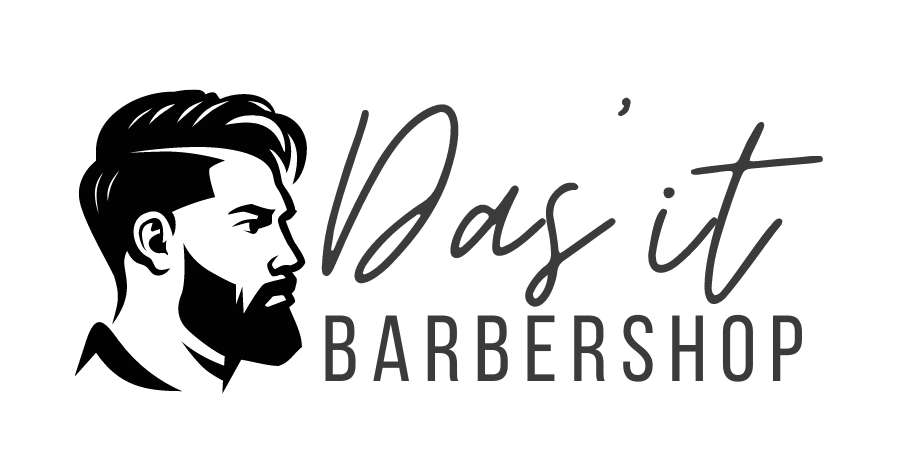Shaving can be a challenging task, especially when dealing with sensitive skin or stubborn facial hair. For those who experience discomfort, irritation, or even razor burns, the daily routine can become a dreaded chore instead of a smooth rite of grooming. However, achieving a pain-free and comfortable shaving experience is not out of reach—it simply requires the adoption of the right techniques and tools specifically tailored to your needs. From preparing your skin adequately before the shave to choosing the right type of razor and shaving cream, each step plays a crucial role in minimizing irritation and ensuring smooth results. By incorporating expert advice and tried-and-true practices, you can transform your shaving routine into a more pleasant and effective process. Below are ten tips that are geared towards helping you attain the most comfortable shave possible, allowing you to face each day with confidence and comfort.
1. Prep Your Skin
Before you even touch your razor, it’s essential to ensure your skin is properly prepared to enhance the quality of your shave and reduce irritation. Start your shaving routine with a warm shower or apply a hot towel to your face. The heat and moisture help to soften your facial hair, making it easier to cut, and opening up your pores, which can reduce the risk of ingrown hairs and razor bumps. By creating a pliable surface, you minimize the resistance the razor encounters, leading to a closer and more comfortable shave. Additionally, consider using a pre-shave oil or cream that moisturizes and shields the skin, providing an extra layer of protection against the sharp blades.
2. Choose the Right Tools
Choosing the appropriate tools is crucial to achieving a pain-free shave. Your choice of razor and blades can significantly influence the shaving outcome, affecting both comfort and closeness. There are several types of razors available, including cartridge, safety, and straight razors, each offering distinct advantages.
Consult with your New York barber for personalized advice on selecting a razor that best suits your skin sensitivity and hair type. The same careful selection applies to blades; opt for sharp blades as dull ones can tug and irritate the skin.
Regularly changing your razor blades is vital to prevent unnecessary friction and discomfort during shaving. Don’t forget to choose a high-quality shaving cream or gel that provides sufficient lubrication and enhances glide, reducing the likelihood of nicks and cuts.
3. Use Quality Shaving Cream/Gel
A good shaving cream or gel is fundamental in achieving a smooth, comfortable shave. These products provide essential lubrication and hydration to your skin, which plays a critical role in reducing razor friction and enhancing glide. When selecting a shaving cream or gel, look for one that contains moisturizing ingredients such as glycerin, aloe vera, or essential oils, as these help to keep the skin hydrated and supple throughout the shaving process.
The right product should also produce a rich, creamy lather that allows the razor to glide effortlessly over the skin, minimizing the risk of nicks, cuts, and irritation. Moreover, a high-quality shaving cream or gel can help soothe the skin during shaving, preventing post-shave redness and dryness. Investing in a premium shaving product not only improves the overall shaving experience but also promotes healthier skin by protecting it from the abrasive action of the razor.
4. Mind Your Direction
Always shave in the direction of hair growth to minimize irritation and avoid painful ingrown hairs. Shaving against the grain can lead to increased friction, which might cause your skin to become irritated and inflamed. By recognizing the natural pattern in which your hair grows, you can ensure a smoother and more comfortable shave. This technique greatly reduces the likelihood of hair follicles becoming trapped beneath the skin’s surface, a common cause of ingrown hairs.
Additionally, shaving with the grain helps preserve the natural layer of protection on your skin, maintaining its softness and preventing razor burn. Patience and attention to detail when following the direction of hair growth contribute to a more refined shaving routine, leaving your skin healthier and less prone to discomfort.
5. Shave in Short Strokes
Adopting a controlled, short-stroke technique during shaving is essential for achieving a more precise and safer shave. Longer strokes can increase the risk of cuts and nicks as they make it harder to maintain consistent pressure and angle throughout the motion.
By employing short strokes, you not only gain more control but also allow for frequent rinsing of the razor, ensuring it’s clear of cream, gel, and shaved hair, which keeps the blade clean and sharp. This approach enables you to carefully navigate curves and contours of your face or body, minimizing irritation and enhancing the overall accuracy of your shaving routine.
Furthermore, short strokes allow you to frequently check your progress, ensuring that no areas are missed while achieving a closer, smoother finish. Prioritizing methodical, short strokes can transform your shaving experience, aligning precision with safety and significantly reducing the chances of injury.
6. Regularly Clean Your Blade
Rinsing your blade after every stroke is essential to maintain its efficiency and ensure a clean shave. As you shave, hair and shaving cream can quickly accumulate between the blades, creating a barrier that prevents close contact with your skin. This buildup not only dulls the blade but also increases the risk of irritation and uneven shaving.
By rinsing the blade regularly, you remove any debris, allowing the razor to glide smoothly over your skin for a closer and more effective shave. Moreover, a clean blade reduces the likelihood of dragging or pulling on the hair, which can cause discomfort and razor burn. Incorporating this simple practice into your routine not only extends the longevity of your razor but also enhances the overall hygiene and quality of your shave, leaving your skin feeling smooth and refreshed.
7. Avoid Repeated Strokes
Shaving over the same area multiple times can lead to significant irritation and discomfort for your skin. Each pass of the razor can slightly remove layers of skin cells, and when repeated excessively, it might result in redness, sensitivity, or even razor burn. To mitigate this, aim for achieving a close shave in one or two strokes. Begin by ensuring your skin is well-prepared; use a quality shaving cream or gel to soften and lift the hair, creating a slick surface for the blade to glide over.
Make sure your razor is sharp and clean, allowing it to cut the hair cleanly and smoothly without unnecessary friction. Take your time to adjust your technique, using gentle pressure and careful precision to avoid needing additional strokes. By focusing on minimizing the number of passes over the skin, you not only protect your skin from irritation but also promote a healthier shaving routine that leaves your skin feeling smooth and resilient.
8. Soothe with Cold Water
After shaving, it is essential to rinse your face with cold water to reap several beneficial effects on your skin. Cold water helps close the pores, which have been opened and exposed during the shaving process. This constriction of the pores minimizes the penetration of dirt and bacteria, reducing the risk of post-shave breakouts and irritation.
Additionally, cold water helps tighten the skin, promoting a smoother and more even complexion. This tightening effect can also assist in reducing the appearance of minor cuts or nicks that may have occurred during shaving.
Moreover, rinsing with cold water can significantly reduce post-shave redness and inflammation, providing a soothing and refreshing sensation that restores comfort to your skin. Integrating this step into your shaving routine not only enhances the immediate appearance and feel of your skin but also contributes to maintaining its long-term health and resilience.
9. Hydrate Your Skin
After shaving, it is crucial to hydrate your skin to replenish moisture and ensure it remains soft and healthy. Applying an alcohol-free aftershave balm or moisturizer is highly recommended for this task. These products are designed to soothe and calm the skin, preventing irritation and dryness that can occur post-shave. By opting for alcohol-free formulas, you avoid the harsh, drying effects that alcohol-based products can have on your skin, particularly after the shaving process has left it more sensitive.
A quality aftershave balm or moisturizer will typically contain nourishing ingredients like aloe vera, chamomile, or shea butter, which offer additional calming benefits and help to lock in moisture. When applying, gently massage the product into your skin using upward, circular motions, which aids in absorption and stimulates blood flow, leaving your skin rejuvenated and refreshed. By consistently incorporating this step into your shaving routine, not only will you improve your immediate post-shave comfort, but you will also maintain the overall suppleness and resilience of your skin in the long run.
10. Know When to Change Blades
Understanding when to change your razor blades is a critical aspect of achieving a smooth, comfortable shave while minimizing the risk of cuts and skin irritation. Using dull blades not only makes shaving less effective but also increases the likelihood of nicks, razor burn, and uneven results. It’s important to pay attention to the feel and performance of your razor; signs that it’s time for a new blade include a pulling sensation, skipping, or a noticeable decline in smoothness with each pass.
For optimal results, consider replacing your razor blade after every five to seven shaves, although this can vary depending on hair type and personal comfort. Additionally, if you notice any rust or corrosion on the blade, replace it immediately to prevent the risk of infection. By regularly changing your razor blades, you ensure that each shave is clean and efficient, contributing to healthier skin and a more satisfying shaving experience overall. Whether using disposable razors or safety razors, keep a fresh supply of blades on hand to maintain consistency in your grooming routine.
By adopting these tips, you can transform your daily routine into a more pleasant and effective experience. Remember, a great shave in New York is achievable with the right techniques and tools. With guidance from your local barber, you can maintain a smooth, comfortable shave every time.
Frequently Asked Questions About Men’s Comfortable Shave
How often should I change my razor blade?
For optimal results, it is recommended to change your razor blade after every five to seven shaves. However, this may vary depending on your hair type and personal comfort. Replace the blade immediately if you notice any rust or corrosion to prevent irritation or infection.
What is the best way to prevent razor burn?
To prevent razor burn, ensure that you properly prepare your skin before shaving. Use a quality shaving cream or gel, shave in the direction of hair growth, and avoid pressing too hard with the razor. Rinsing with cold water after shaving can also help soothe the skin.
Is it better to shave with or against the grain?
For a comfortable shave, it is best to start shaving with the grain, or in the direction of hair growth. If closer shaving is needed, you can optionally go across or against the grain in the final pass, but take extra care to avoid skin irritation.
How can I achieve a close shave without irritation?
A close shave without irritation can be achieved by using a sharp, clean blade and incorporating a good pre-shave routine. This includes cleansing your face, using warm water to soften the hairs, applying a quality shaving cream or gel, and making gentle strokes with your razor.
What should I do if I get a cut while shaving?
If you get a cut while shaving, rinse the area with cool water and apply gentle pressure to stop the bleeding. You can use a styptic pencil or alum block to help seal the cut and promote healing. Avoid touching or picking at the area to prevent further irritation.


